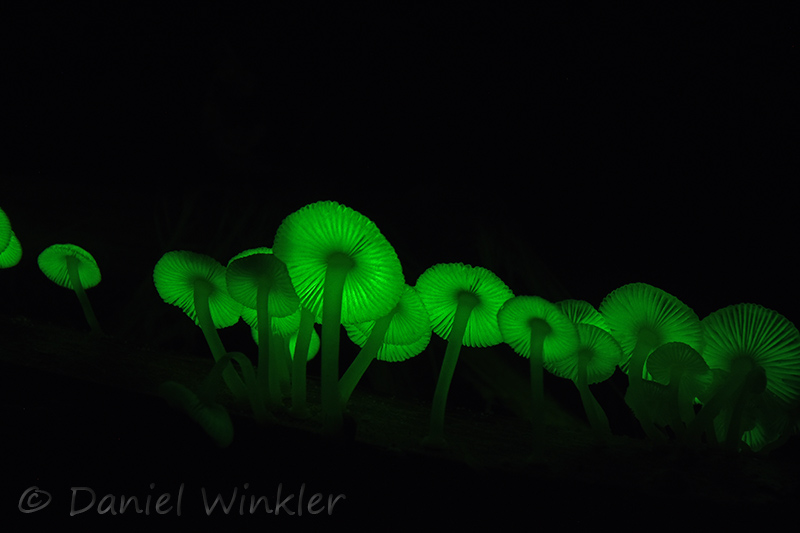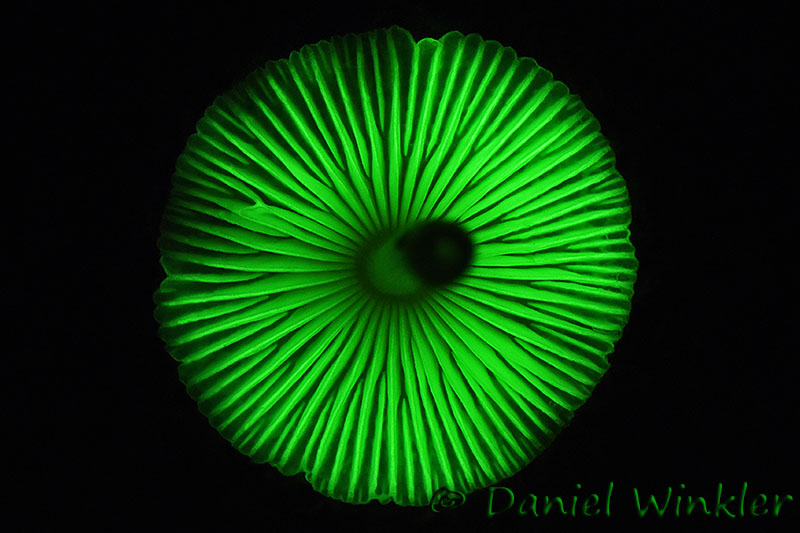Returning home from Mushroaming Tibet, I made a dream come true. For years I have been looking for bioluminescent mushrooms in the Amazon, but mostly we just found bio-luminescent mycelia and once we found a bunch of little Mycena on a log, but the insects had already munched most of the caps and it was a rather sad scene. Anyway, in early August I stopped by in Japan to hunt for bio-luminescent fungi. Although June, I found out later, would have been better timing - the mushrooms react enthusiastically to the first phase of the summer monsoon rains - still I got lucky. A typhoon messed quite a bit with the logistics and the mushrooms, the intense winds dry them out, but in the end I am very happy with what I experienced and quite alright with what I managed to photograph.
In the dark of night finding these glowing jewels is an indescribable feeling!
I admire and love mushrooms, but the feeling sitting in the dark with these light-emanating mushrooms is really awe inspiring.
They quietly radiate a mysterious and impressive energy.

A group of the glowing Mycena chlorophos growing from a palm frond.
(Note the automated image sequencing by watching a couple seconds)

The gills emanate the most bioluminescence. Mycena chlorophos stems do not have light emanating cells and the tissue of the cap itself is so thin that the relatively thick gills are much brighter.
However, the mycelium is also bioluminescent - see below, but is too dim to compete with the bright caps, which are extremely viscid.

The darker image of the Mycena chlorophos was exposed for 15 seconds with an ISO 1000 and aperture F4. The second image is slightly lit with indirect light of a LED flash light (Note the automated image sequencing).

Mycena chlorophos (Berk. & M.A. Curtis) Sacc.was first described in 1860 from material collected in the subtropical and tropical Bonin Islands, Japan,
as part of the U.S. North Pacific Exploring Expedition (1853–1856) under Commanders Ringgold and Rodgers (after Desjardin et al. 2010).

Bio-luminescent cap and gills of Mycena chlorophos. This Mycena is a saprobic mushroom, meaning it lives of digesting wood. Bio-luminescence lasts under normal conditions for about 3 days.
It is speculated that in the enzymatic process of breaking down lignin bioluminescence could be a by-product.





The auto-focus apparently aimed at the palm trees in the back, but the two branches leaning against the trunk of a palm are clearly visible.
However, the photo also shows that mycelia are active in a dead palm fonds in the back top right corner.

Sources:
Desjardin DE, Oliveira AG, Stevani CV. 2008. Fungi bioluminescence revisited. In: Photochemical and Photobiological Sciences 7(2): 170-182.
bioluminescence bioluminescent bio-luminescence bio-luminescent tbioluminiscencia bioluminiscent bioluminiscente bioluminiscentes chlorophanos chlorophos foxfire fungi fungus glow glowing green hongos luminescent mesófilo mesófilo mushroom mushrooms mycena mycenaceae mycenachlorophanos phosphorescent
